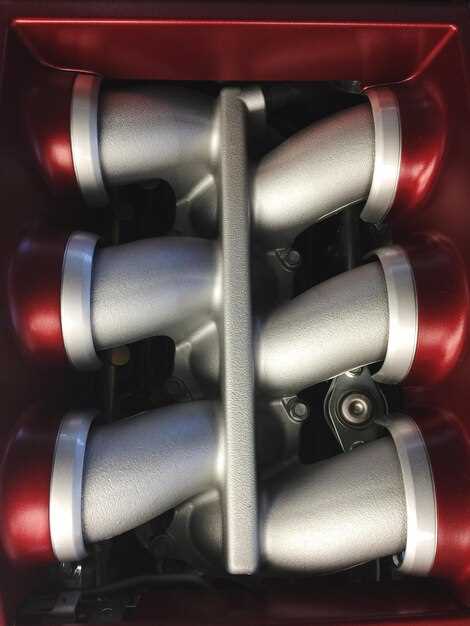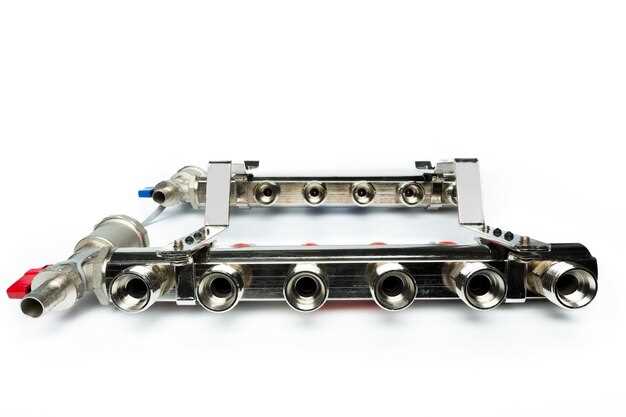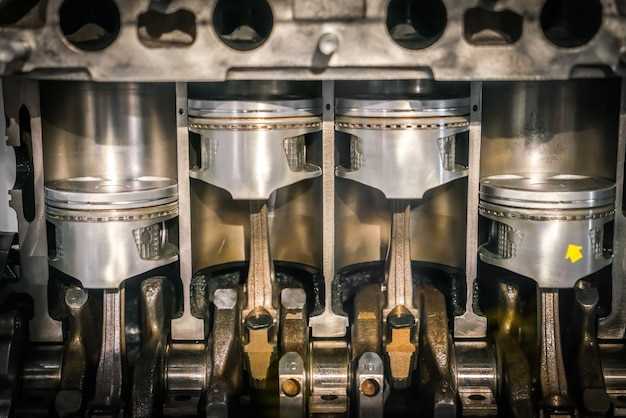
When it comes to building a high-performance drag racing vehicle, every component counts, and the exhaust system plays a pivotal role in maximizing power and efficiency. A well-designed exhaust system not only enhances engine performance but also improves the overall responsiveness of the vehicle. In the world of drag racing, where fractions of a second can determine victory, the right exhaust setup can mean the difference between success and failure.
Drag racing demands components that can withstand extreme conditions while optimizing airflow. A high-quality performance exhaust system reduces back pressure and enhances exhaust flow, allowing for improved horsepower and torque. Additionally, lightweight materials and innovative design can significantly decrease overall vehicle weight, further contributing to superior acceleration. This article delves into the top exhaust systems tailored specifically for drag racing builds, focusing on features that elevate performance beyond conventional setups.
In selecting the ideal exhaust system for your drag racing build, it’s essential to consider factors such as material durability, noise level, and ease of installation. Understanding how these aspects interplay will empower you to make an informed choice that aligns with your racing goals. Whether you’re a seasoned racer or a newcomer eager to enhance your machine, this guide will provide the insights needed to elevate your performance on the track.
Choosing the Right Material for Performance Exhaust Systems
When it comes to building a high-performance drag racing vehicle, selecting the right material for the exhaust system is crucial. The chosen material significantly impacts both the flow and overall performance of the exhaust system. Here are some of the most common materials used, along with their advantages and disadvantages:
- Stainless Steel:
- Offers excellent corrosion resistance and durability.
- Provides a high level of thermal conductivity, improving exhaust flow.
- Available in various grades, with T304 and T409 being the most popular for performance applications.
- Relatively lightweight compared to other metals.
- Aluminized Steel:
- Cost-effective option for entry-level builds.
- Offers decent corrosion resistance due to its aluminized coating.
- Heavier than stainless steel, which can affect overall performance.
- Less durable and may require replacement sooner than stainless alternatives.
- Titanium:
- Extremely lightweight, which can enhance performance and reduce vehicle weight.
- Exceptional strength-to-weight ratio and high resistance to heat.
- Very expensive compared to other materials and may not be necessary for all builds.
- Mild Steel:
- Often used in custom exhaust systems due to its availability and cost.
- Prone to rust and may require additional coatings or treatments.
- Can be heavy, which may negatively impact performance.
When selecting a material, consider the following factors:
- Budget: Determine how much you are willing to spend on the exhaust system.
- Performance Goals: Identify how the material influences flow and overall performance.
- Durability Requirements: Think about how often you want to replace or repair the exhaust system.
- Weight Considerations: Assess how weight impacts your drag racing build.
Ultimately, the right material will enhance exhaust flow, contributing to better engine performance and efficiency. Evaluating the characteristics of each material will help you make an informed decision that aligns with your racing goals.
Maximizing Exhaust Flow: Key Features and Design Considerations

In the pursuit of enhanced performance for drag racing builds, optimizing exhaust flow is crucial. A well-designed exhaust system not only reduces back pressure but also improves engine efficiency, leading to increased power output. Several key features and design considerations play a vital role in achieving maximum exhaust flow.
First, the diameter of the exhaust piping significantly influences performance. Larger diameter pipes allow for more efficient gas evacuation, minimizing restrictions that would otherwise impede flow. However, the diameter must be appropriate for the specific engine and its power output; oversized pipes can lead to a loss of torque in smaller engines.
Material choice is another essential factor. Utilizing lightweight and durable materials such as stainless steel or titanium can reduce overall weight while enhancing corrosion resistance. These properties are particularly advantageous in drag racing, where every ounce matters for acceleration.
The design of exhaust headers can also impact flow dynamics. Header configurations such as equal-length and tri-Y designs promote better airflow by reducing turbulence and ensuring that exhaust gases exit the engine seamlessly. This design consideration aids in maintaining consistent exhaust velocity, further contributing to overall performance.
Incorporation of performance mufflers that minimize restrictions while controlling sound levels is another strategic approach. Choosing straight-through or perforated core designs facilitates optimal exhaust flow without compromising noise regulations, allowing racers to gain the desired performance edge.
Tuning options, such as adjustable exhaust systems, provide flexibility in configurations for different track conditions. This adaptability allows racers to fine-tune exhaust setup for maximum effectiveness depending on the specific requirements of each race.
Lastly, proper installation and sealing of all connections are vital for preventing leaks, which can significantly hinder performance. Ensuring a tight fit and using high-quality gaskets can help maintain the integrity of the exhaust system, allowing for optimal flow at all RPM levels.
By focusing on these key features and design considerations, drag racing enthusiasts can maximize exhaust flow, resulting in improved engine performance and competitive advantages on the track.
Comparing Popular Brands: Performance Metrics and Recommendations

When selecting an exhaust system for drag racing builds, it’s crucial to analyze the flow characteristics and overall performance of various brands. A well-optimized exhaust can significantly enhance horsepower, torque, and vehicle responsiveness. Here are some of the leading brands in the market, their performance metrics, and recommendations based on various needs.
Flowmaster: Known for its unique chambered design, Flowmaster exhaust systems provide improved flow and distinctive sound. Many racers report increases in horsepower and torque across a wide RPM range. For drag racing, their Super 44 series is a favorite, offering a blend of aggressive sound and optimal exhaust flow. It is particularly recommended for builds aiming for balanced performance.
Borla: Borla exhaust systems are synonymous with high-quality materials and innovative designs. Their R&D focuses on maximizing exhaust flow while minimizing back pressure, resulting in impressive performance gains. The S-Type series is often recommended for drag racing due to its ability to maintain optimal sound levels while enhancing exhaust flow, making it a solid choice for competitive environments.
MagnaFlow: For those prioritizing durability and efficiency, MagnaFlow offers exhaust systems that are built to last. Their designs focus on free-flowing performance and deep tone, especially in their Race series. The 3-inch diameter piping allows for maximum exhaust flow, which is ideal for drag racing enthusiasts needing to increase horsepower substantially.
Dynomax: With a focus on performance and affordability, Dynomax provides competitive exhaust flow rates. Their Ultra Flo system features straight-through technology, which enhances exhaust flow and minimizes turbulence. This system is excellent for racers seeking a cost-effective solution without sacrificing power output.
Hooker: Hooker Exhaust systems, especially the Super Competition series, are tailored for high-performance applications. They emphasize maximum flow and power. Designed specifically for racing, these systems aid in achieving lower lap times by optimizing the exhaust path, making them highly recommended for serious drag racers.
In summary, each of these brands offers unique advantages when it comes to exhaust systems suited for drag racing builds. Evaluating your specific requirements–such as desired sound, budget, and performance goals–will help you select the ideal exhaust to maximize your vehicle’s potential on the track.



